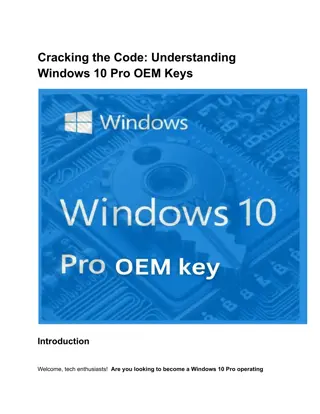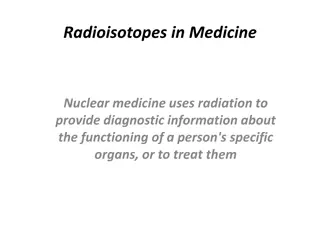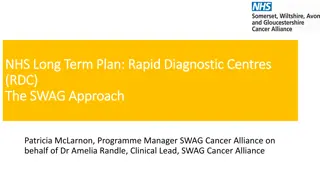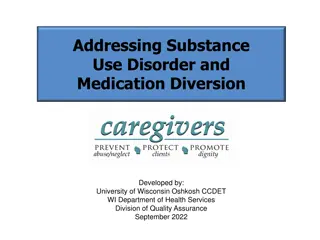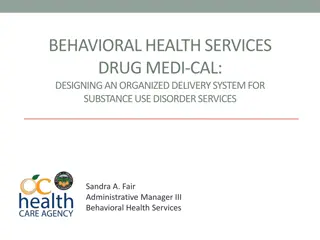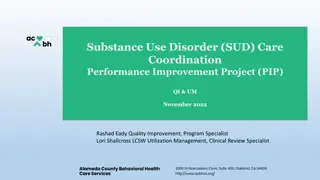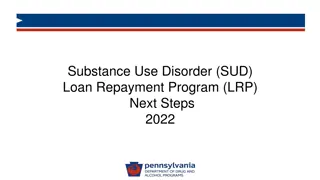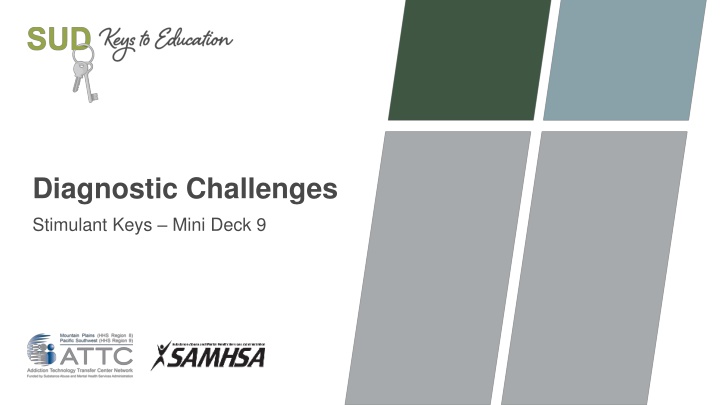
Key Points in Diagnostic Challenges of Substance-Induced Symptoms
Understanding the distinction between substance-induced symptoms and underlying mental health disorders is crucial in diagnosis. Consider factors like symptom onset relative to substance use, frequency, and intensity of drug use. Challenges include sustained abstinence, relapse, and potential side effects of psychotropic medications. Limited research exists on duration of substance-induced symptoms. Recommendations advise treating presenting symptoms and revising diagnoses as needed over time.
Download Presentation

Please find below an Image/Link to download the presentation.
The content on the website is provided AS IS for your information and personal use only. It may not be sold, licensed, or shared on other websites without obtaining consent from the author. If you encounter any issues during the download, it is possible that the publisher has removed the file from their server.
You are allowed to download the files provided on this website for personal or commercial use, subject to the condition that they are used lawfully. All files are the property of their respective owners.
The content on the website is provided AS IS for your information and personal use only. It may not be sold, licensed, or shared on other websites without obtaining consent from the author.
E N D
Presentation Transcript
Diagnostic Challenges Stimulant Keys Mini Deck 9
Diagnostic Challenges (1) Vital to get accurate history Are symptoms substance-induced or part of an underlying MH disorder? If very similar symptoms present prior to initiation of substance use, they are likely primary If symptoms go away after period of sustained abstinence, they were likely substance-induced If they persist, it is likely they have an underlying MH disorder What is frequency and intensity of drug use? 2 SOURCES: Chiang et al., 2019; Kmeic, 2018; McKee & Brahm, 2016
Diagnostic Challenges (2) Challenges to this approach: Sustained abstinence takes time to achieve and maintain Relapse to substance use is likely; it is often a part of recovery Psychotic symptoms may occur as a symptom of intoxication or withdrawal Psychotropic medications have side effects that may mimic symptoms of MH or SUD 3 SOURCES: Chiang et al., 2019; Kmeic, 2018; McKee & Brahm, 2016
Diagnostic Challenges (3) Limited research data exists on how much time must pass to consider a symptom as having been substance-induced. For instance: Cocaine-induced hallucinations or depression may linger even after abstinence has been established Meth-induced psychosis or depression may very transient or last for several months or longer. For some these symptoms may never remit. 4 SOURCES: Chiang et al., 2019; Kmeic, 2018; McKee & Brahm, 2016
Diagnostic Challenges (4) Recommendation: At intake/program admission, treat the presenting symptoms May not know etiology at treatment initiation As patient proceeds in treatment, the etiology of their symptoms should become clearer The longer they are abstinent or using minimally and symptoms persist, the more likely that they have a non- substance induced MH disorder There will be diagnostic uncertainties, so be prepared to revise your diagnoses and treatment plans over time 5 SOURCES: Chiang et al., 2019; Kmeic, 2018; McKee & Brahm, 2016




